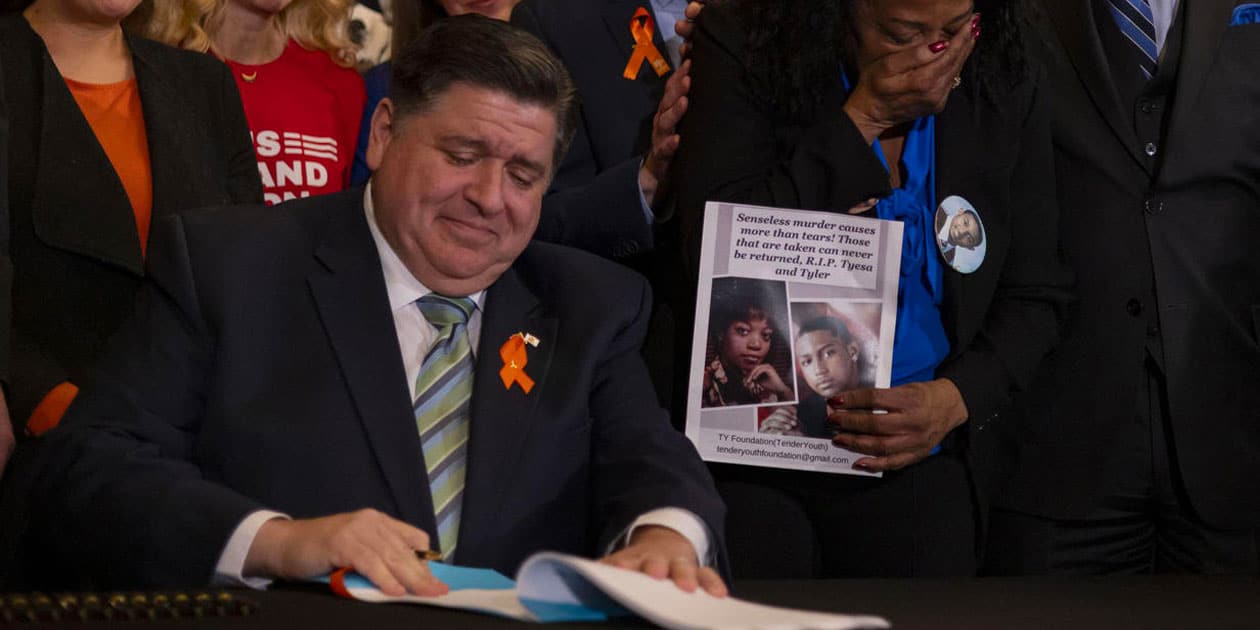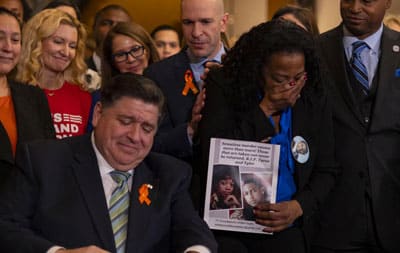 A Chicago federal judge denied a bid for a temporary restraining order and preliminary injunction to block the ban on so-called “assault weapons” by Illinois and a similar measure in Naperville.
A Chicago federal judge denied a bid for a temporary restraining order and preliminary injunction to block the ban on so-called “assault weapons” by Illinois and a similar measure in Naperville.
The state law bans the sale of these semiautomatic firearms and limits magazine capacity at 10 rounds for long guns and 15 rounds for pistols.
U.S. District Judge Virginia Kendall called the pair of bans “constitutionally sound” in her Friday ruling. The court order seeking to halt the new restrictions was filed by the National Association for Gun Rights and Naperville gun store owner Robert Bevis.
Attorneys for both leaned heavily on last summer’s U.S. Supreme Court ruling in New York State Rifle and Pistol Association v. Bruen. The majority opinion, authored by Justice Clarence Thomas, declared that governments seeking to regulate guns must demonstrate that their measures are “consistent with the nation’s historical tradition of firearms regulation.”
Kendall’s ruling is believed to be the first by a federal judge that upholds a ban on “assault weapons” in the wake of the Bruen decision.
Her decision came despite the specific wording of Thomas’ opinion. He said that restrictions must be limited to those weapons considered “dangerous” and unusual.”
As the now-common though inaccurate definition of “assault weapons” includes semiautomatic firearms, it is impossible to hold that they are not “common.” There are over 100 million semiautomatic pistols and 40 million semiautomatic firearms legally owned in the U.S.
But, at least to one federal judge, that does not render them common. Attorneys for the National Association for Gun Rights made this obvious argument, saying the weapons are “unquestionably” in common use. “An arm that is in common use for lawful purposes is, by definition, not unusual. Such an arm therefore cannot be both dangerous and unusual and therefore cannot be…subjected to a blanket ban.”
That apparently did not hold sway with Judge Kendall, who determined that “because assault weapons are particularly dangerous weapons and high-capacity magazines are particularly dangerous weapon accessories, their regulation accords with history and tradition.”
“Naperville and Illinois lawfully exercised their authority to control their possession, transfer, sale, and manufacture by enacting a ban on commercial sales,” the judge added.
She determined that so-called “assault weapons” intrinsically have a higher and “unusual” risk that may cause greater harm and more deaths. She added to this reasoning her conclusion that “the text of the Second Amendment is limited to only certain arms.”
How so? First of all, the documents specifically accord the right to “keep and bear arms.” There are not certain arms listed and others excluded.
Secondly, the Supreme Court plainly laid the framework for possible bans, and firearms must clearly be both dangerous and unusual to fall into this category. Having over 140 million of a certain type of weapon legally owned by Americans renders the unusual aspect meaningless.
Semiautomatic weapons, which detractors falsely label as “assault weapons,” are extremely popular and by no means fit the “unusual” description.
But Kendall chose to ignore these obvious facts. Instead, she wrote that “history and tradition demonstrate that particularly ‘dangerous’ weapons are unprotected.”
The judge further asserted that the plaintiffs would suffer, if the ban were allowed to carry forward, an “alleged deprivation of a constitutional right.”
There is nothing “alleged” about stripping Second Amendment rights away from law-abiding citizens. Nor is it “alleged” that irreparable harm results from depriving Americans of their constitutional liberties through vague definitions and twisted logic.
The good news is that there are multiple challenges to this unconstitutional ban, and the law is on hold in parts of Illinois due to these legal actions. It should not take long for a clear-minded judge to see the fallacy of allowing a state government to determine that the Constitution does not apply to its citizens.

